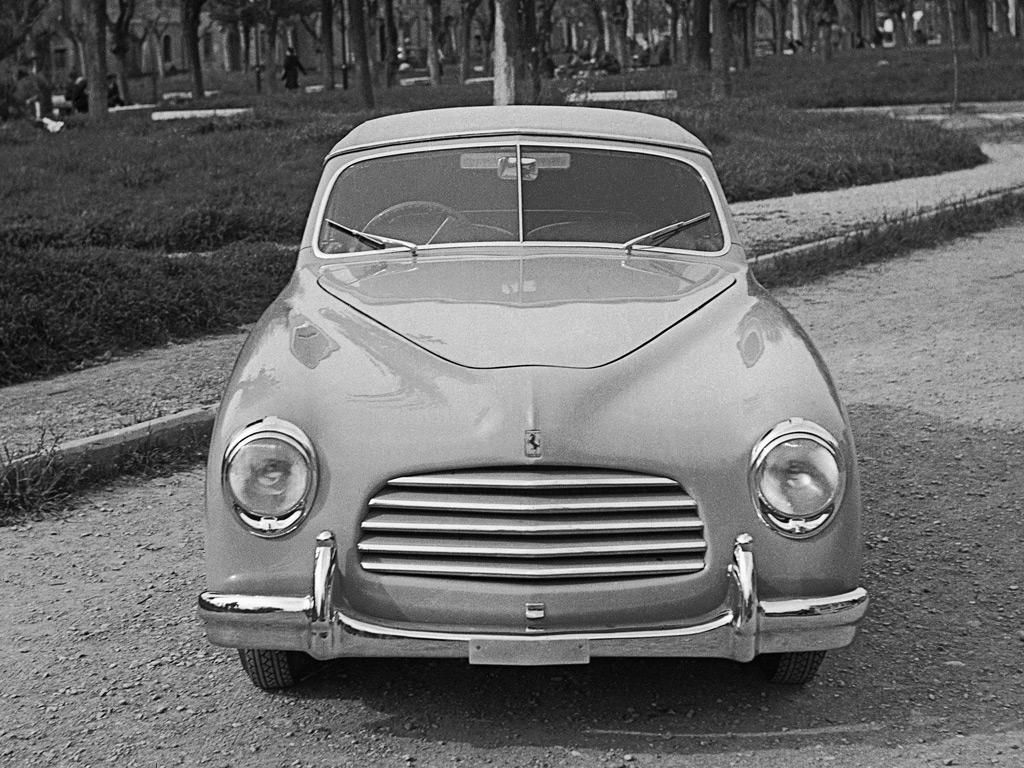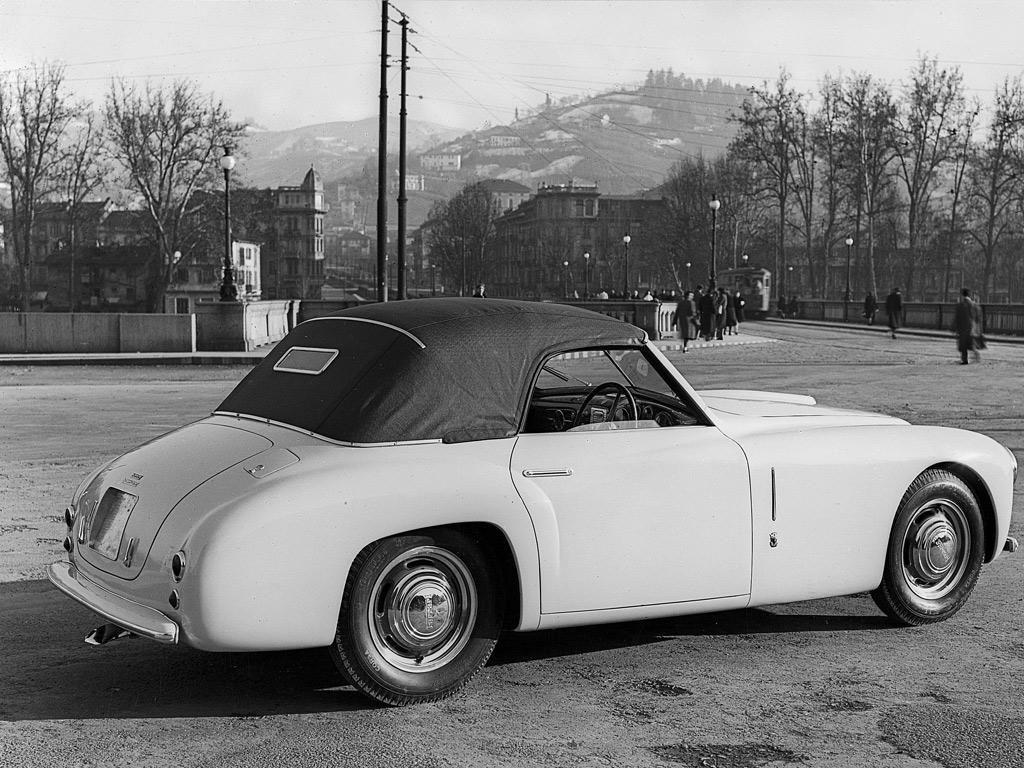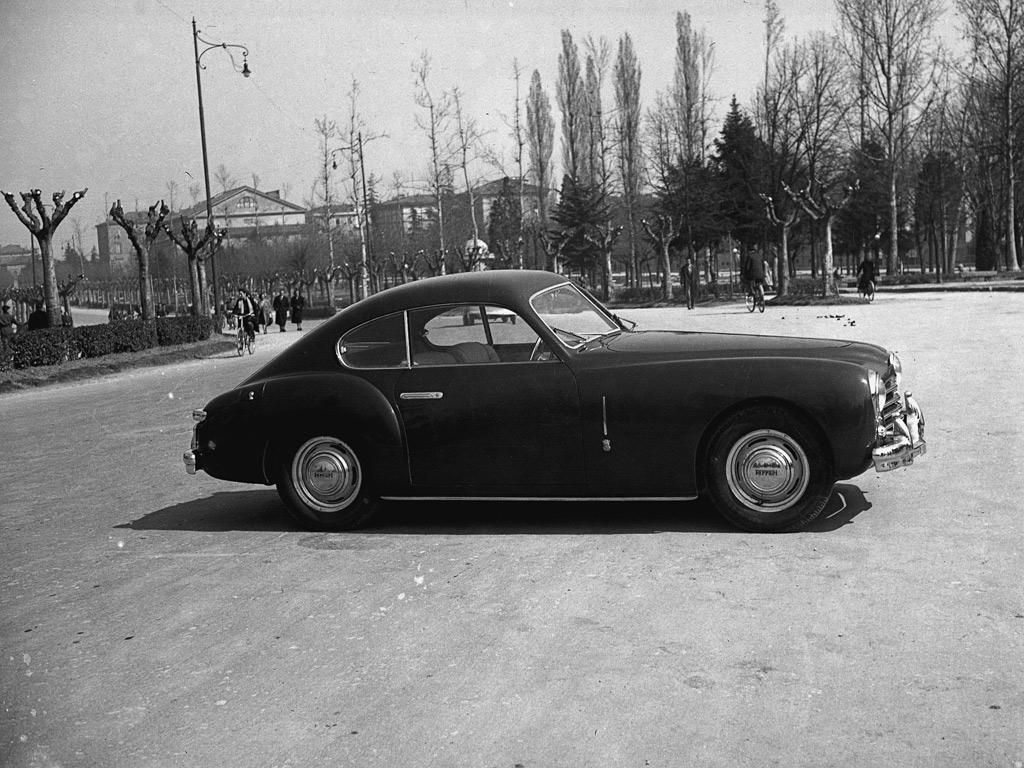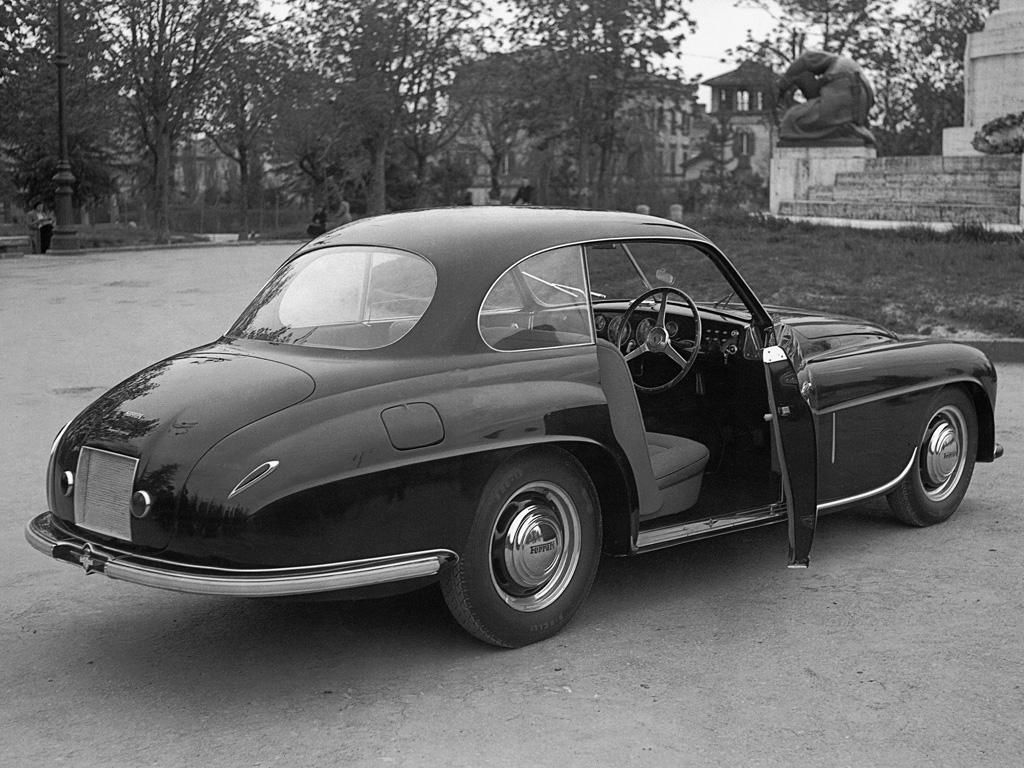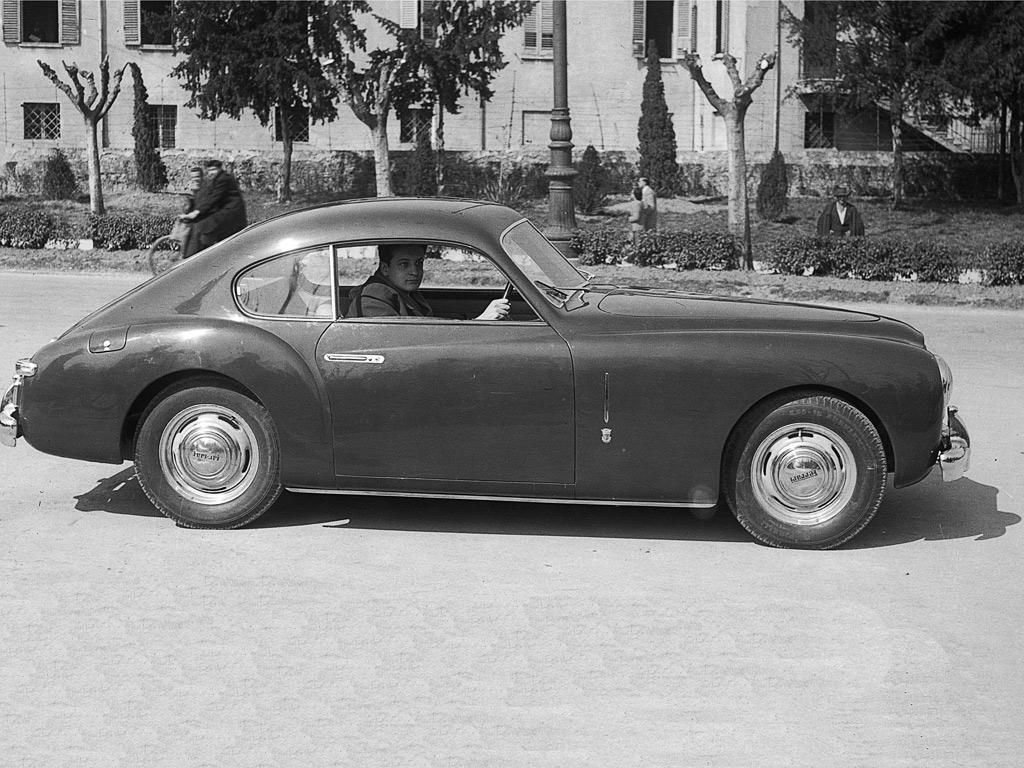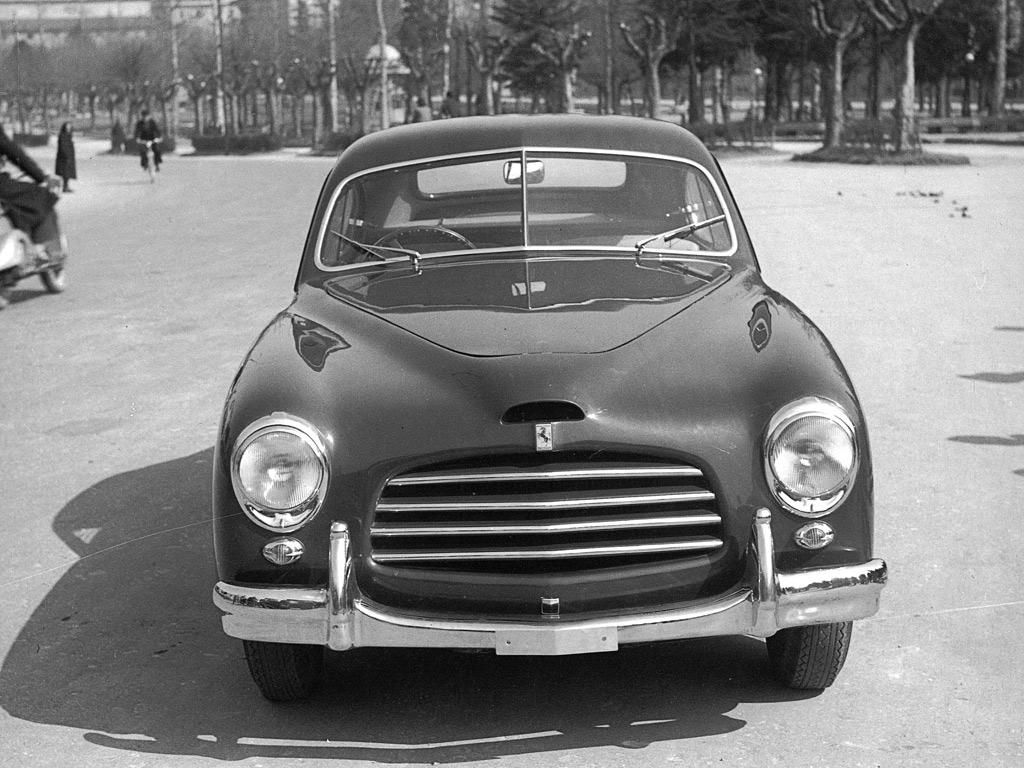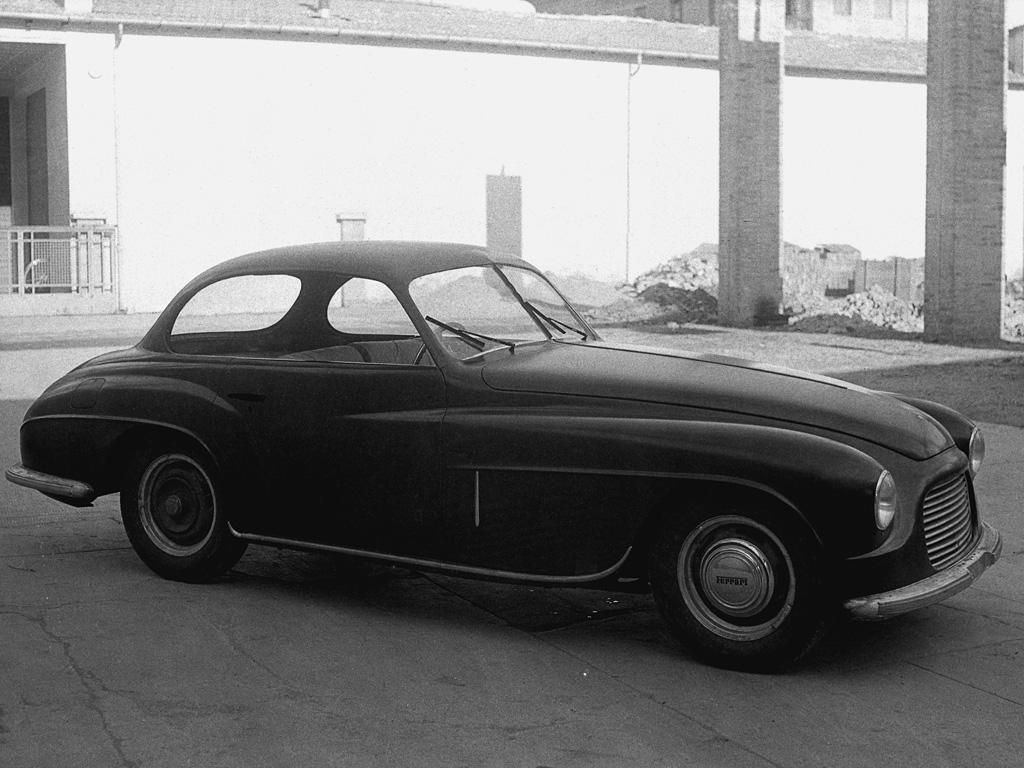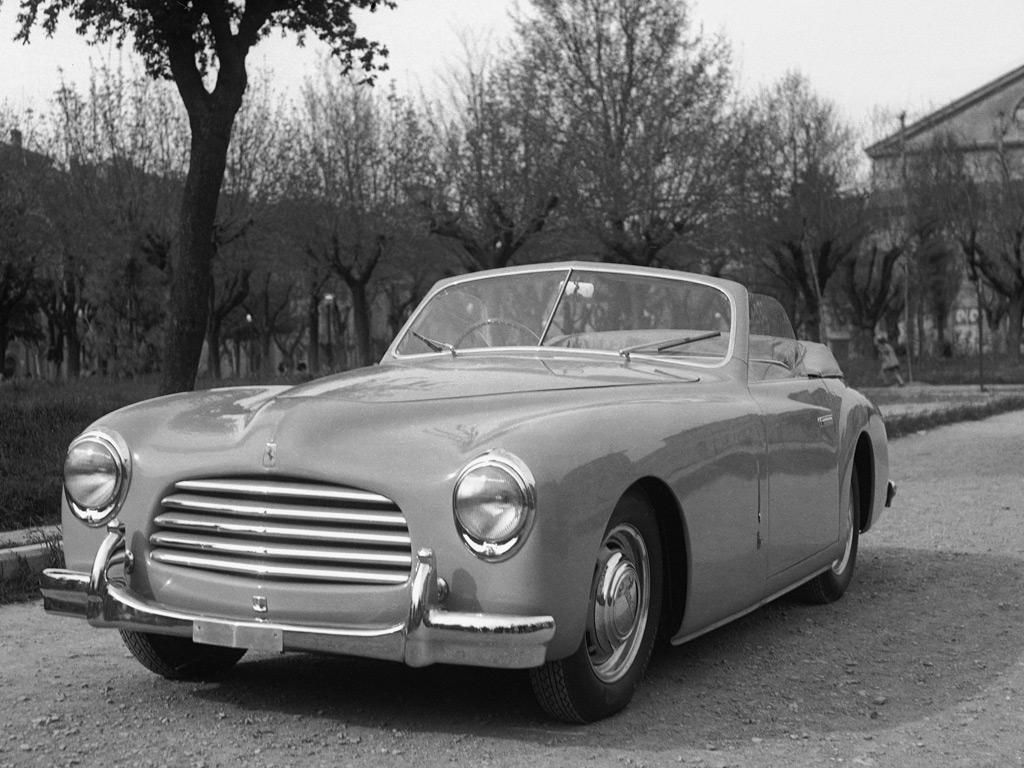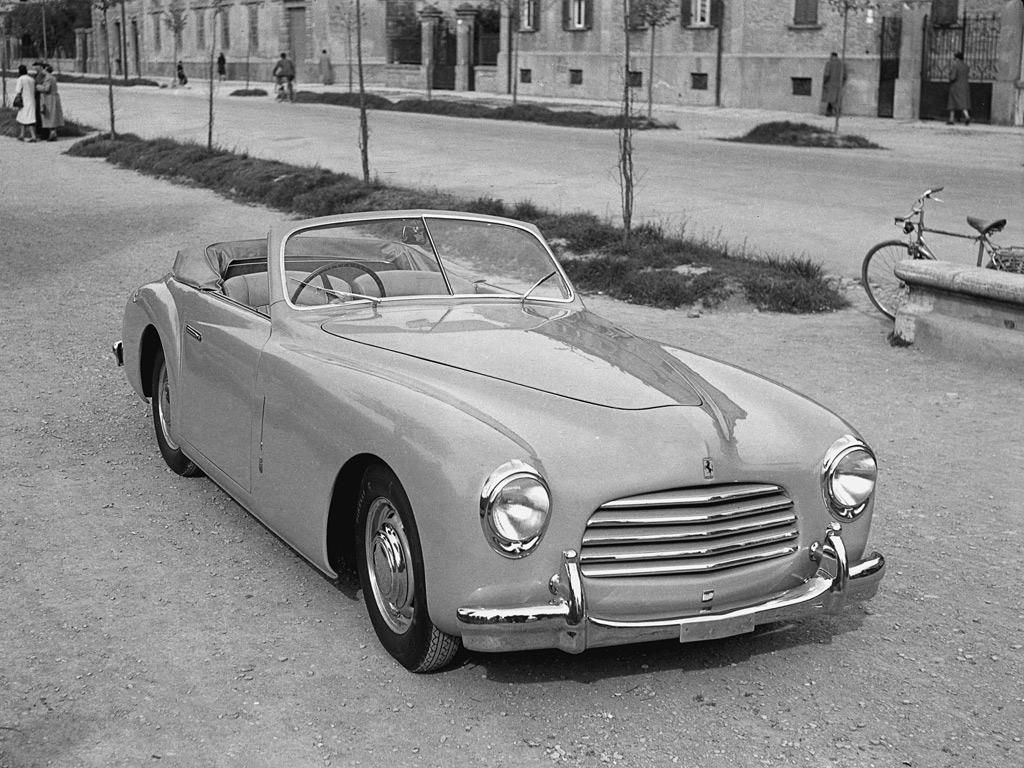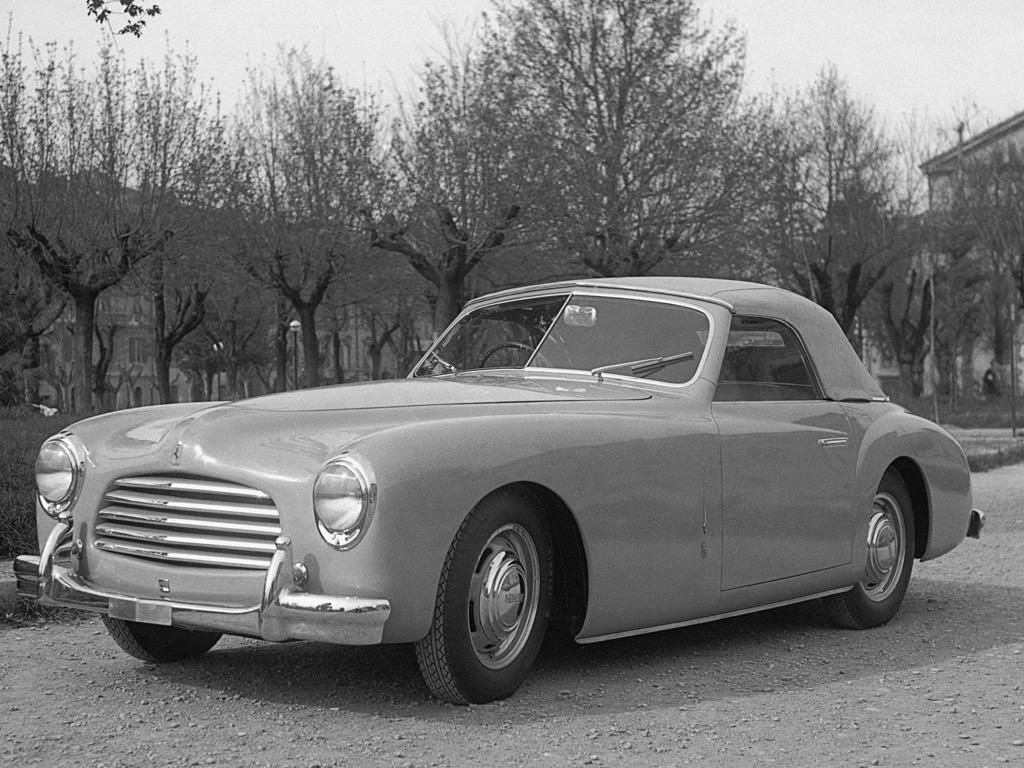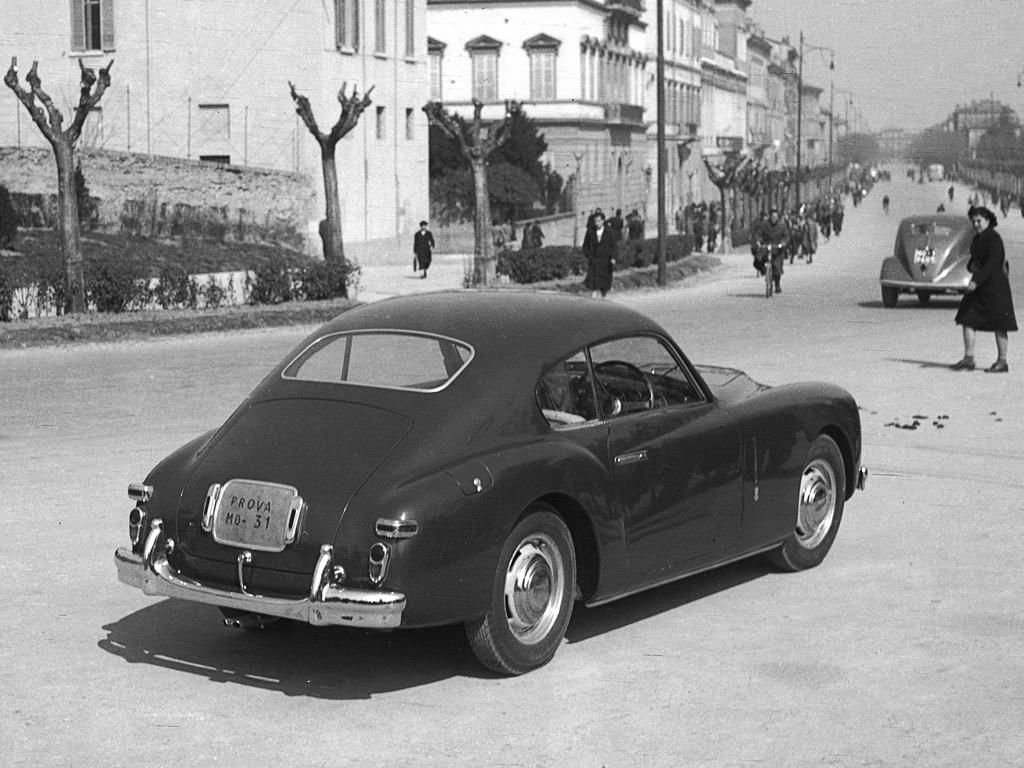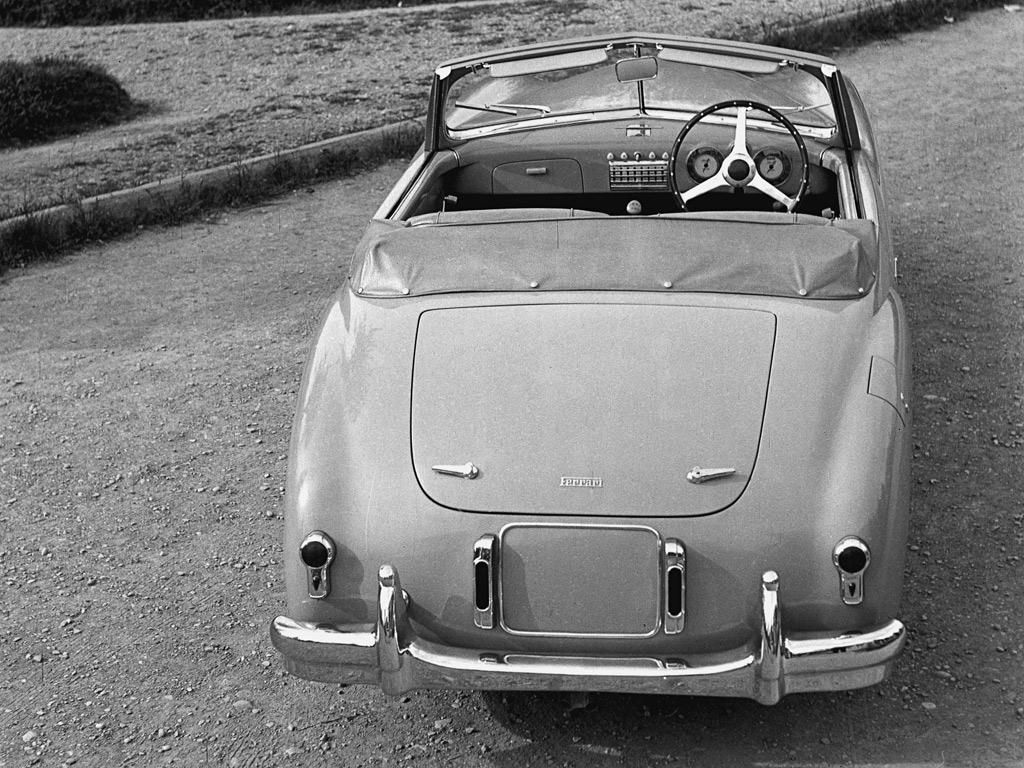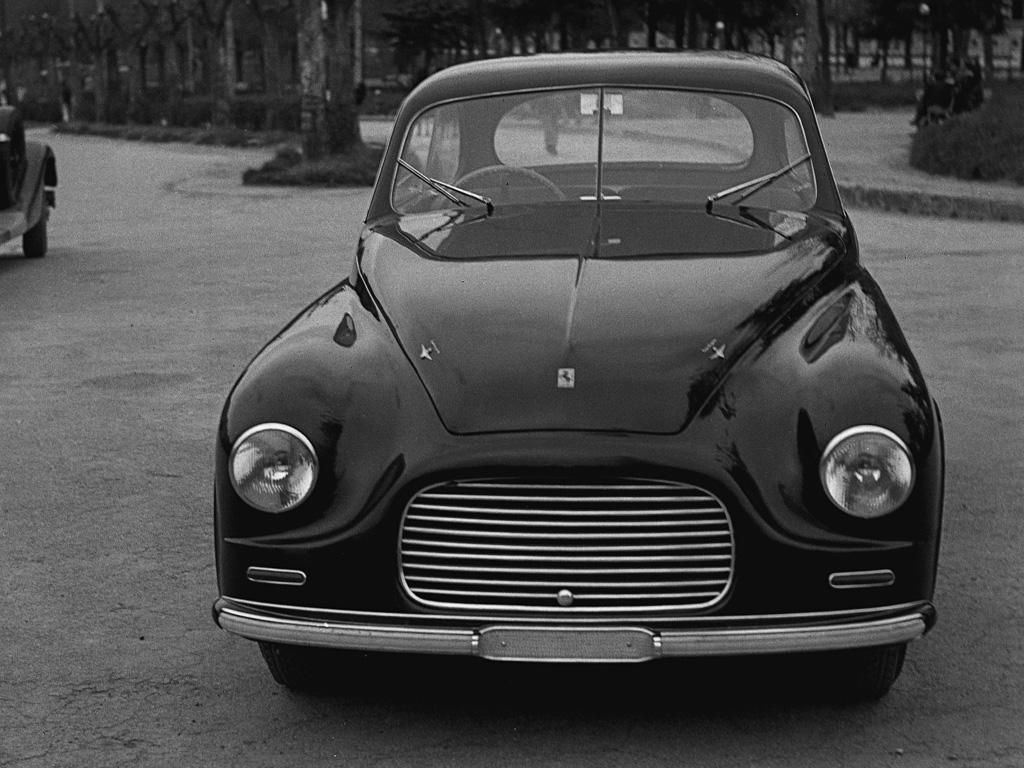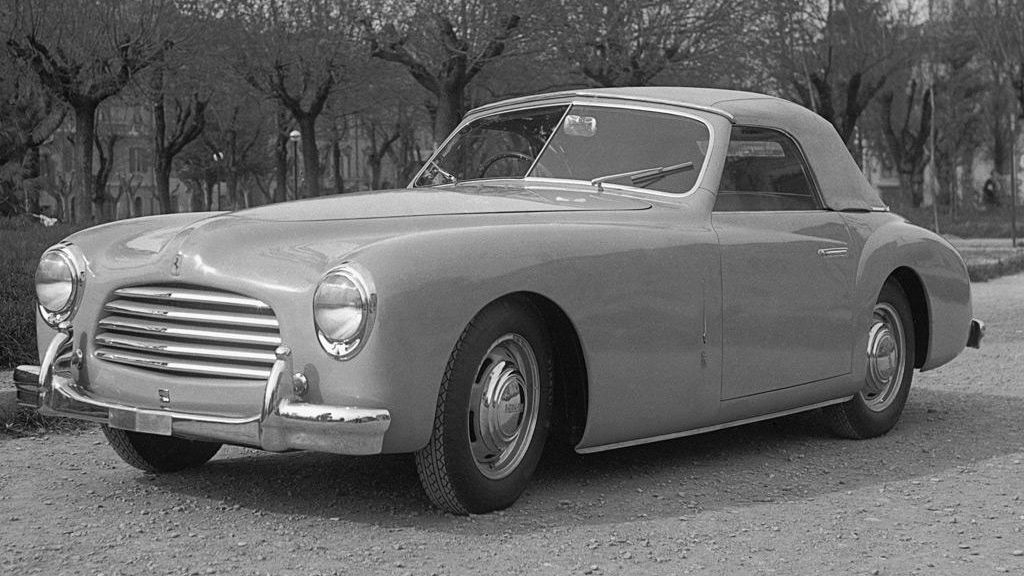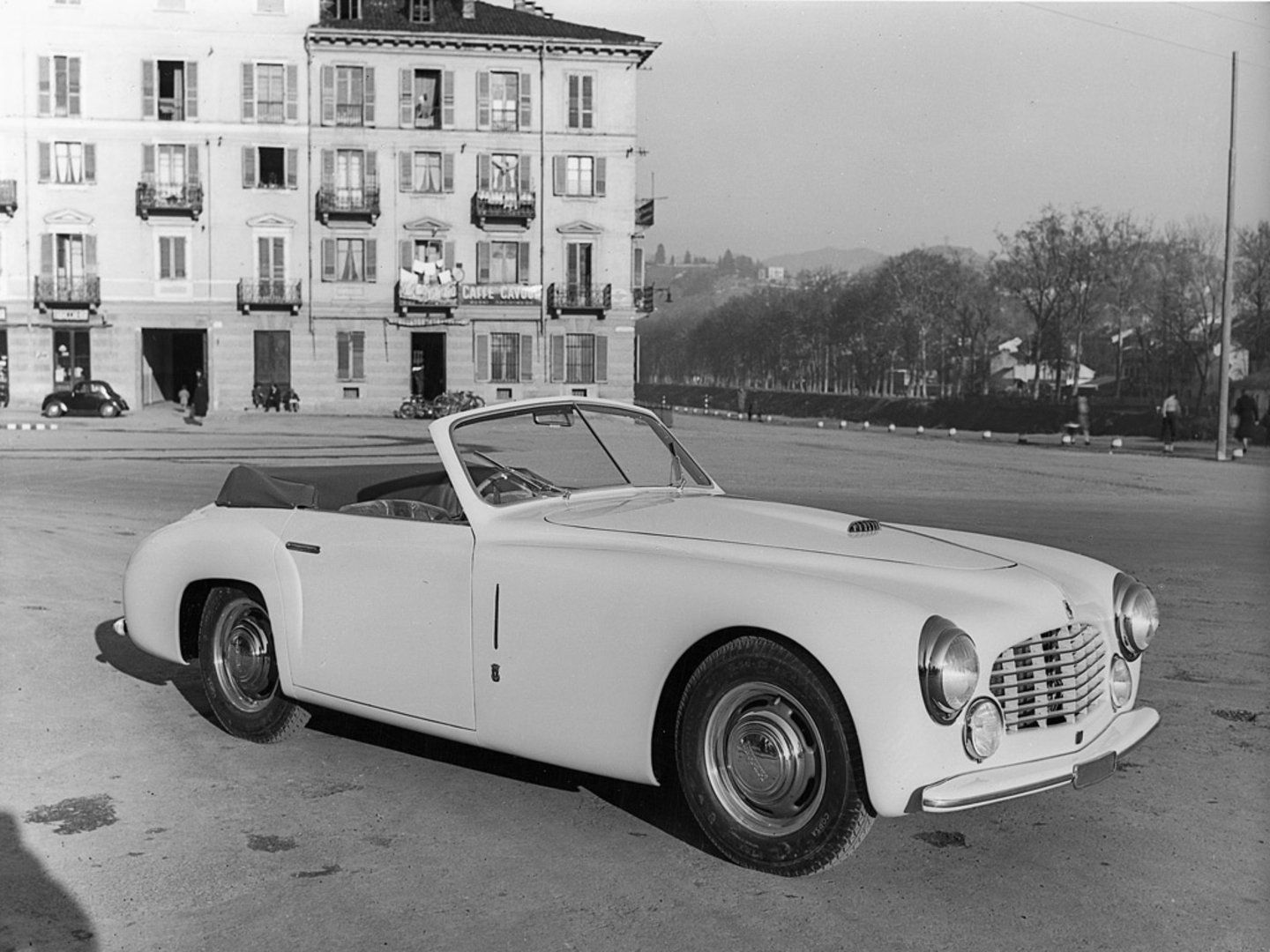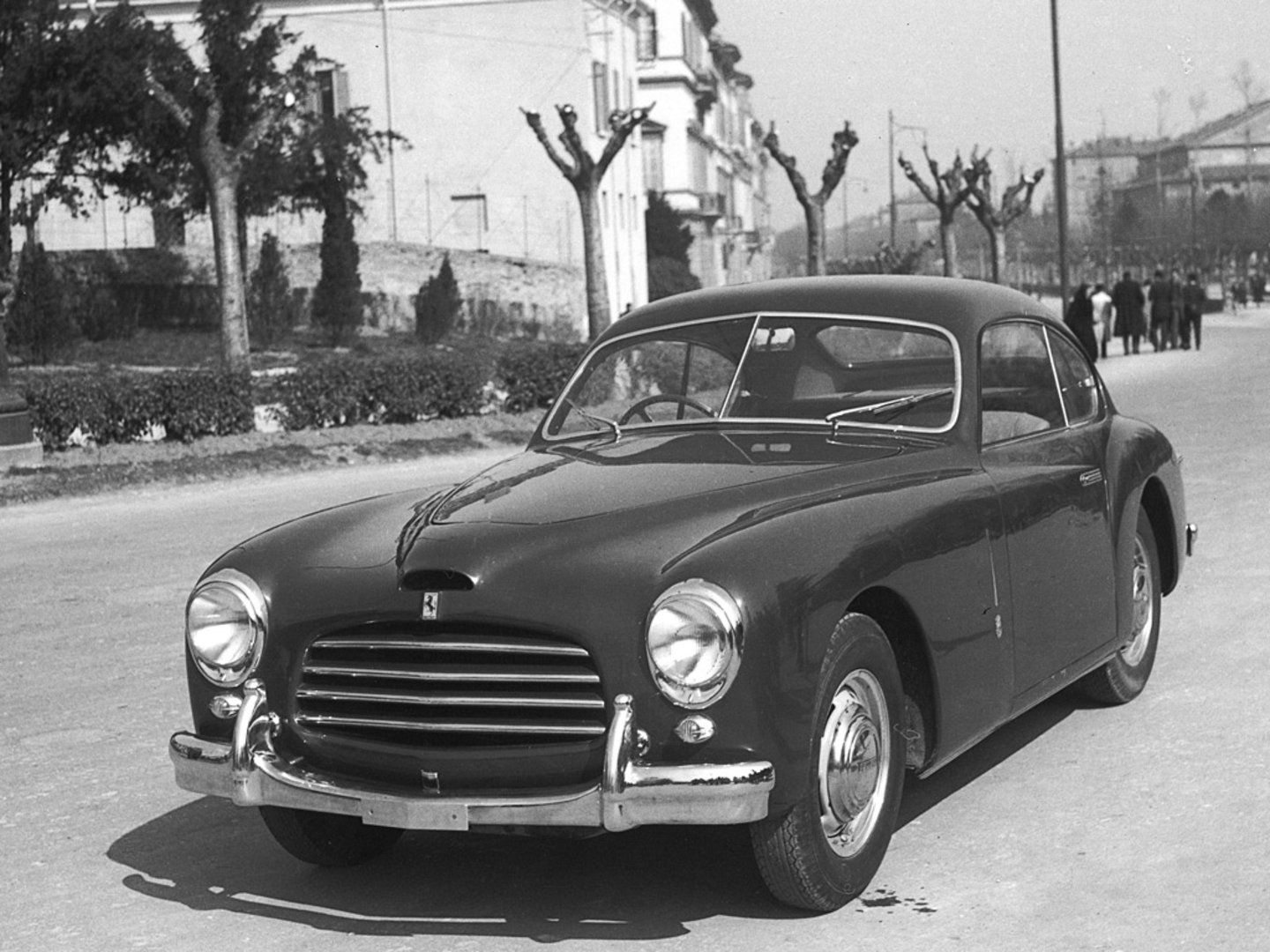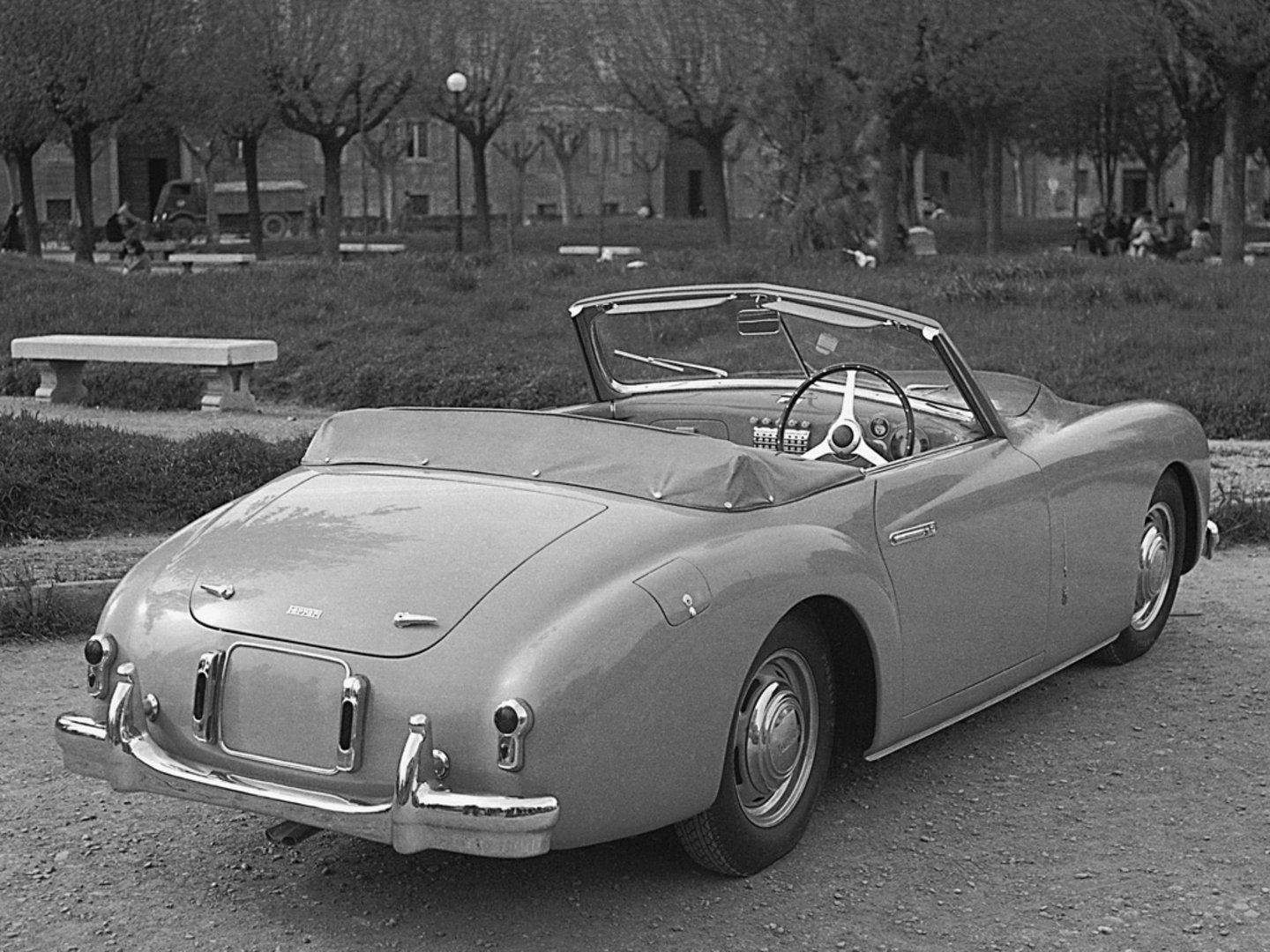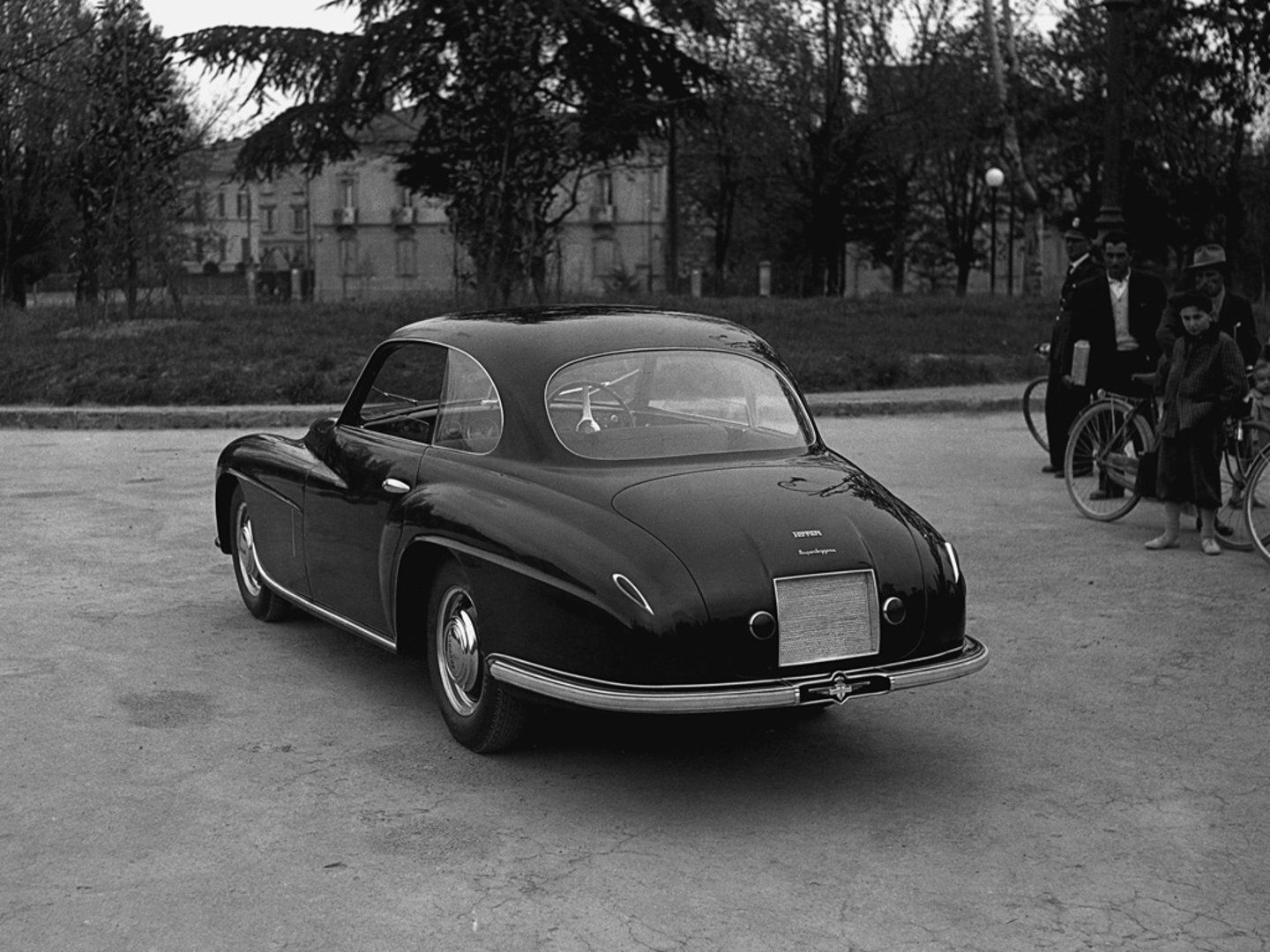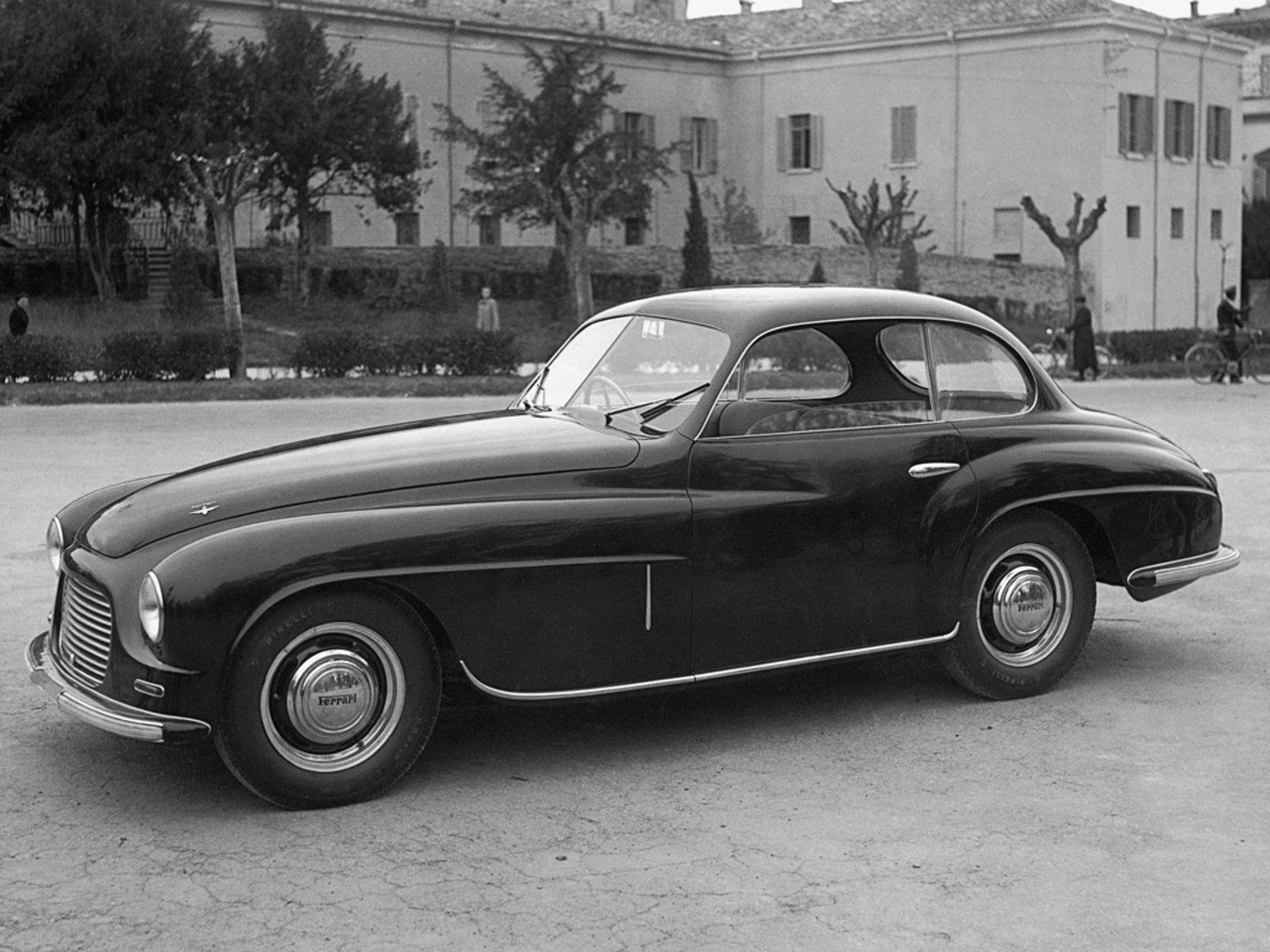By 1948 Ferrari->ke252 had firmly established itself as a manufacturer of top-level racing cars. The next step was to take that engineering and performance excellence to the streets. History has shown that this was a wise decision, and that legacy started with the 166 Inter,->ke3510 Ferrari’s first grand touring car.
Compared to the California->ke3183 and 458 Italia,->ke3479 the 166 Inter seems like a reasonably tame vehicle, even by the standards of its era. Essentially a coachbuilt body on Ferrari’s long-wheelbase racing chassis, the 166 Inter was named for Scuderia Inter, the team that successfully campaigned Ferrari 166 models in 1948, and for the displacement of each of its twelve cylinders (166 cc). The 166 Inter debuted at the Paris Motor Show->ke227 in October of 1949, with a body by Carozzeria Touring. Stabilimenti Farina, Ghia, Finale, Pininfarina and Bertone also produced bodies for the three dozen or so Inters that were built between 1948 and 1950. The grand tourers were equipped as full roadgoing vehicles, but a few actually did make it to the track and displayed performance worthy of the name.
Though demure by modern standards, the Ferrari 166 Inter was the start of a storied legacy of roadgoing Ferraris, and helped to create the template of the “grand touring” car that influences vehicles to this day. As one of the first Ferrari models to sell well outside of Italy, it was a significant influence on the marque’s reputation as well.
Continue reading to learn more about the Ferrari 166 Inter.
1948 - 1950 Ferrari 166 Inter
- Make: Array
- Model: 1948 - 1950 Ferrari 166 Inter
- [do not use] Vehicle Model: Array
Exterior
The 166 Inter was a fully coachbuilt vehicle; Ferrari essentially sold the customer a bare chassis and delivered it to the buyer’s preferred styling house. As a result there was a lot of variation between individual cars. All 166 Inters share a long hood and short rear deck, and a typical look featured a wide grille, berlinetta body and wire wheels. Steel disc wheels were also available.
Split windshields were a product of the time, but nearly all of the other details varied from coachbuilder to coachbuilder. Touring was a popular choice, and produced 21 of the 37 166 Inters. Touring-built 166 Inters could be recognized by the house’s “mustache” grille surround, tiny bumpers and pillarless side windows. Stabilimenti Farina’s 166 Inter looked similar, but lacked the distinctive grille surround and had a smoother look that was similar to Stabilimenti Farina’s body for the contemporary Simca.
Stabilimenti Farina also built 166 Inter cabriolets, with a total coupe and cabriolet production run of eight cars. Vignale offered a lighter-looking interpretation with a more svelte look that was also popular, with a total of 7 166 Inters coming from that design house.
Exterior Dimensions
|
Wheelbase |
2,620 MM (103.14 Inches) |
|
Front track |
1,250 MM (49.21 Inches) |
|
Rear track |
1,200 MM (47.24 Inches) |
|
Weight |
900 KG (1984 LBS) |
Interior
The concept of a grand touring car could be considered an outgrowth of coachbuilt sports cars from Bentley and others in the 1930s. The 166 Inter, for its variations in styling, was seen as a car designed for two passengers and a weekend’s worth of luggage, designed for high-speed travel. In stark contrast to the bare metal of the race cars, the 166 Inter featured a fully upholstered interior with luxurious trim. A wood-rimmed steering wheel with the famed Ferrari prancing horse at the center greeted the driver, and body-hugging seats were a nod to the car’s racing heritage.
Drivetrain
The chassis was taken directly from the 166 MM racing car, and was produced by Gilco alongside the racer’s chassis. A single overhead cam 2.0 liter V12 provided power, sending 110 horsepower to the rear wheels through a five-speed manual transmission. The engine was a high-revving and sophisticated unit designed by Gioaccchino Colombo. A choice of single twin-choke or triple carburetors was offered; triple-carb cars were more powerful, nudging 140 horsepower. Top speed was just under 100 mph.
The suspension was also similar to that of the track car, with transverse leaf springs, wishbones and lever-type shocks. Semi-elliptic leaves were used at the rear. Drum brakes were used at all four corners. Some 166 Inters differed from the racing cars with the use of Rudge-type splined hubs and disc wheels.
Drivetrain Specifications
|
Type |
front, longitudinal 60° V12 |
|
Bore/stroke |
60 x 58.8 mm |
|
Unitary displacement |
166.25 cc |
|
Total displacement |
1995.02 cc |
|
Compression ratio |
6.8 : 1 |
|
Maximum power |
90 HP @ 5,600 RPM |
|
Power per liter |
45 hp/l |
|
Top speed |
150 KM/H (93 MPH) |
Prices
As a road car, the 166 Inter tends to fetch lower prices at auction than Ferrari’s storied race cars. Thanks to low production with just over three dozen built and the Ferrari badge, of course, values are still quite high. A 1950 166 Inter sold for $655,783 in 2010, and another hit $870,325 in 2014. Compare that to the contemporary 166MM racers, which routinely top $2 million.
Competition
Talbot Lago Grand Sport T26
Talbot-Lago’s coachbuilt T26 Grand Sport was a notable powerhouse, with a 190 horsepower 4.5 liter straight-six engine and a lengthened and widened chassis borrowed from the T26C Grand Prix car. A pair of competition T26 cars beat Ferrari at LeMans in 1950. Unlike Ferrari, the Grand Sport T26 was one of Talbot-Lago’s last hurrahs, and the company had faded away by the late 1950s.
Read our full review here.
Conclusion
As a “where it all began” milestone car, the Ferrari 166 Inter has left a substantial imprint on sports cars, and on the industry as a whole. Ferrari’s decision to translate its racing success to public roads was obviously a successful one, and set the stage for many others to follow.


